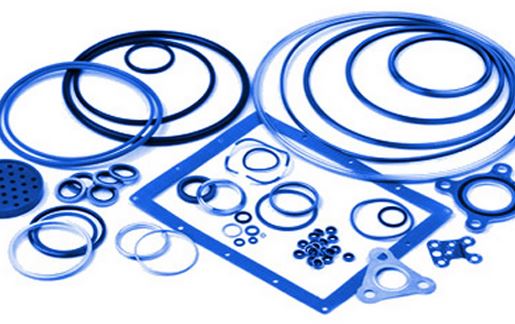Aerospace Material Specification (AMS) standards require companies around the world to test materials and evaluate their chemical, mechanical and thermal properties. As components and devices are fully tested, engineers and manufacturers can properly determine the design, performance and safety of the applications.
When it comes to aerospace standards – and several others, too – Apple Rubber engineers have found one type of rubber to be the ideal sealing solutions for applications: Fluorosilicone (FMVQ).
Working with FSR
Fluorosilicone elastomers are used in demanding – and sometimes extreme – applications where fuel resistance, low-temperature performance and high-temperature performance are required.
Quick refresher on FSR:
-High non-polarity, giving superior fuel and oil resistance
-Considered a premium, quality product
-Primarily used in aerospace and automotive applications
-Recommended for use with petroleum oil, jet fuel and mineral oils
-Excellent in extreme temperatures
So what makes fluorosilicone such a great sealing material for aerospace applications?
1. Fuel and oil resistance
Fluorosilicones have become the seal material of choice for jet fuel on commercial, military and general aviation aircrafts (as well as many automotive applications). Due to its fluorinated side chains, the rubber has chemical compatibility and resistance to petroleum-based oils, greases and fuels.
Applications:
Engine gaskets: At the high range of 150°C to 200°C application temperatures, FSR gaskets can provide long life for engine gaskets — while providing high level of resistance to oils and fuels.
Electrical housing seals: Post curing of the FSR reduces outgassing to low levels of 1.00% TML and 0.10% CVCM tested by ASTM E595. This helps prevent any contamination to sensitive electrical components.
2. Extreme temperature range properties
Aerospace military specifications call for FSR to display high modulus and increased temperature resistance in O-Rings, molded parts and extruded shapes. Under pressure, FSR retains its shape and has great bounce-back after compression – both great qualities in aerospace applications.
Its high temperature range can withstand conditions ranging from -60°C to +175°C. During the developing stage, the compound can successfully meet extreme industrial climate requirements for heat aging up to 225°C.
In fuel line seals, FSR allows quality performance in ultra-low temperatures aerospace applications. Because of this, seals have the capability to prevent failures as fuel links experience changing temperatures ( rom takeoff to high-altitude).
3. Excellent compression set resistance
Rubber compounds permanently deform under strain. When elastomers are used to create seals, this permanent deformation is of particular concern.
This permanent deformation is referred to as compression set. When it comes to elastomers, we aim for a low compression set – meaning that the test specimen completely returned to its original height and form when removed from a fixture or applied pressure.
This is a must for aerospace applications, which typically have tighter tolerances. With little room for compression loss, FSR materials allow for a more robust seal performance.
Fluorosilicone elastomers can help fulfill evolving performance and cost requirements – and are better suited than ever to help designers deliver sustainable automotive innovation.
Have questions or comments about fluorosilicone or Aerospace Material Specifications? Connect with us on Twitter @AppleRubber. For more specific information, view our laboratory report on FVMQ material testing.

